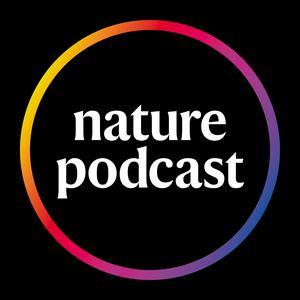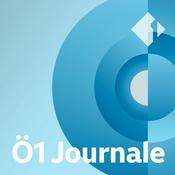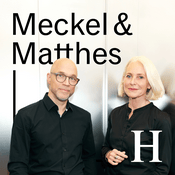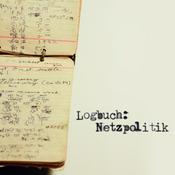850 Episoden

Nature's News & Views roundup of 2025
19.12.2025 | 20 Min.
Nature: Asteroids, antibiotics and ants: a year of remarkable scienceIn this episode:1:58 Evidence of ancient brine on an asteroidSamples taken from the asteroid Bennu by NASA's OSIRIS-REx spacecraft suggest the parent body it originated from is likely to have contained salty, subsurface water. This finding provides insights into the chemistry of the early Solar System, and suggests that brines might have been an important place where pre-biotic molecules were formed.News & Views: Asteroid Bennu contains salts from ancient brineNature Podcast: Asteroid Bennu contains building blocks of life08:01 How gene expression doesn't always reflect a cell's functionCells are often grouped into categories according to the RNA molecules they produce. However a study of zebrafish (Danio rerio) brains revealed that cells can be functionally diverse even if they appear molecularly similar. This finding adds more nuance to how a cell's ‘type’ is ultimately defined.News & Views: Does a cell’s gene expression always reflect its function?12:01 The disproportionate mortality risks of extreme rainfallAn assessment of death rates in India’s coastal megacity of Mumbai revealed that the impact of extreme rainfall events will be highest for women, young children and residents of informal settlements. This situation is likely to become more pronounced as a result of climate change.News & Views: Extreme rainfall poses the biggest risk to Mumbai’s most vulnerable people14:46 An AI-designed underwater glueInspired by animals like barnacles and aided by machine learning, researchers have developed a super-sticky compound that works as an underwater adhesive. To demonstrate its properties, researchers applied it to a rubber duck, which stuck firmly to a rock on a beach despite being battered by the sea.News & Views: AI learns from nature to design super-adhesive gels that work underwaterNature Podcast: Underwater glue shows its sticking power in rubber duck test Hosted on Acast. See acast.com/privacy for more information.

The Nature Podcast festive spectacular 2025
17.12.2025 | 42 Min.
00:46 The gifts that sparked a love of scienceNature put a call out for readers to tell us about memorable presents that first got them interested in science, or mementos of their life in research. These include telescopes, yeast-themed wedding rings, and... cows’ eyes.Nature: The gift that shaped my career in science08:12 “I am the Very Model of a Miniature Tyrannosaur”In the first of our annual festive songs celebrating the science of the past year, we tell the story of a diminutive dinosaur that turned out to be its own species.Nature Podcast: Meet the ‘Wee-rex’. Tiny tyrannosaur is its own speciesNature Video: Hotly debated dinosaur is not a tiny T. rex after all11:43 A very scientific quizAn all-star cast competes for the glory or being the winner of the Nature Podcast’s 2025 festive quiz.Nature: Meet the ‘Wee-rex’. Tiny tyrannosaur is its own speciesNature: This company claimed to ‘de-extinct’ dire wolves. Then the fighting startedNature Podcast: 3D-printed fake wasps help explain bad animal mimicryNature Video: ‘Aqua tweezers’ manipulate particles with water wavesNature Podcast: Sapphire anvils squeeze metals atomically-thinNature Video: Vesuvius volcano turned this brain to glassNature Podcast: Ancient viral DNA helps human embryos developNature Video: Magnetic fibres give this robot a soft gripNature: These contact lenses give people infrared vision — even with their eyes shutNature Video: Is this really the world's largest mirror? Researchers put it to the testNature Podcast: World’s tiniest pacemaker could revolutionize heart surgeryNature Podcast: Earth’s deepest ecosystem discovered six miles below the seaNature Podcast: Nature goes inside the world’s largest ‘mosquito factory’ — here’s the buzzNature Podcast: Apocalypse then: how cataclysms shaped human societiesNature Podcast: Honey, I ate the kids: how hunger and hormones make mice aggressive25:21 “Hard the Hydrogel is Stuck”Our second festive song is an ode to a rubber duck that was stuck to a rock, thanks to a newly designed, super-adhesive hydrogel.Nature Podcast: Underwater glue shows its sticking power in rubber duck testNature Video: Why did researchers stick a duck to a rock? To show off their super glue28:42 Nature’s 10Each year, Nature’s 10 highlights some of the people who have helped shape science over the past 12 months. We hear about a few of the people who made the 2025 list, including: a civil servant who stood up for evidence-based public-health policy; the science sleuth who revealed a retraction crisis at Indian universities; and the baby whose life was saved by the first personalized CRISPR therapy.Nature: Nature’s 10Subscribe to Nature Briefing, an unmissable daily round-up of science news, opinion and analysis free in your inbox every weekday. Hosted on Acast. See acast.com/privacy for more information.

Neanderthals mastered fire — 400,000 years ago
10.12.2025 | 22 Min.
00:46 Evidence of the earliest fire Baked soil, ancient tools, and materials that could be used to start fires show that Neanderthals were making fire in the UK 400,000 years ago — the earliest evidence of this skill found so far. Ancient humans are known to have used naturally occurring fires, but evidence of deliberate fire-starting has been hard to come by. A new suite of evidence pushes back the date of fire mastery by 350,000 years. The team behind the finding believe it helps create a more nuanced picture of Neanderthals, who perhaps gathered round fires and told stories in ancient Europe. Research Article: Davis et al.News and Views: Oldest known evidence of the controlled ignition of fire11:31 Research HighlightsMachine-learning algorithms can help to identify traces of life in ancient rocks — plus, why paintings containing a vivid green pigment lose their lustre over time. Research Highlight: AI finds signs of life in ancient rocksResearch Highlight: The mystery of emerald green — cracked13:55 How AI chatbots can sway voters with ease Research suggests that artificial-intelligence chatbots can influence voters’ political views and have a bigger effect than conventional campaigning and advertising. One study found that chatbot conversations swung participants’ candidate preferences by up to 15 percentage points, while another revealed that the chatbots’ effectiveness stems from their ability to synthesize a lot of information in a conversational way. Nature: AI chatbots can sway voters with remarkable ease — is it time to worry? Hosted on Acast. See acast.com/privacy for more information.

Photobombing satellites could ruin the night sky for space telescopes
03.12.2025 | 23 Min.
00:46 How satellite mega-constellations could ruin space-based astronomyThe ability of space-based telescopes to image the distant Universe could be in peril, according to new research investigating the impacts of light-pollution from future satellites. Streaks of reflected light from satellites currently in low-Earth orbit are already seen in telescope images, and planned launches could raise the number of satellites from around 15,000 to over half-a-million. Computer modelling revealed that this drastic increase would result in images taken by instruments like the Hubble Space Telescope becoming unusable by astronomers. The team propose a series of strategies to help mitigate these impacts, preventing this future becoming reality.Research Article: Borlaff et al.Nature: Satellite swarms set to photobomb more than 95% of some telescopes’ images11:08 Research HighlightsHow researchers have sped up the trapping of antimatter atoms — plus, how hydrogen fuel emission benefits vary considerably from sector to sector.Research Highlight: Laser cooling traps more antimatter atoms than ever beforeResearch Highlight: Hydrogen fuel isn’t always the green choice13:41 The negative consequences of video call glitchesGlitches in video calls are an annoying feature of everyday life, but these brief interruptions could have serious real-world impacts, according to analysis from a team of researchers. In one experiment, the team found that video calls with glitches decreased the likelihood of someone being hired for a job. Analysis of other data suggested glitchy calls were associated with lower chances of individuals being granted parole. The team behind the work think that these visual errors break the illusion that a video call is a real face-to-face conversation, potentially impairing judgements about the quality of the information discussed.Research article: Brucks et al.Subscribe to Nature Briefing, an unmissable daily round-up of science news, opinion and analysis free in your inbox every weekday. Hosted on Acast. See acast.com/privacy for more information.

Audio long read: Faulty mitochondria cause deadly diseases — fixing them is about to get a lot easier
28.11.2025 | 17 Min.
CRISPR-based gene editing has revolutionized modern biology, but these tools are unable to access the DNA that resides inside mitochondria. Researchers are eager to access and edit this DNA to understand more about the energy production and the mutations that can cause incurable mitochondrial diseases.Because CRISPR can’t help with these problems, researchers have been looking for other ways to precisely edit the mitochrondrial genome. And the past few years have brought some success — if researchers can make editing safe and accurate enough, it could eventually be used to treat, and even cure, these genetic conditions.This is an audio version of our Feature: Faulty mitochondria cause deadly diseases — fixing them is about to get a lot easier Hosted on Acast. See acast.com/privacy for more information.
Weitere Nachrichten Podcasts
Trending Nachrichten Podcasts
Über Nature Podcast
Höre Nature Podcast, Machtwechsel – mit Dagmar Rosenfeld und Robin Alexander und viele andere Podcasts aus aller Welt mit der radio.at-App

Hol dir die kostenlose radio.at App
- Sender und Podcasts favorisieren
- Streamen via Wifi oder Bluetooth
- Unterstützt Carplay & Android Auto
- viele weitere App Funktionen
Hol dir die kostenlose radio.at App
- Sender und Podcasts favorisieren
- Streamen via Wifi oder Bluetooth
- Unterstützt Carplay & Android Auto
- viele weitere App Funktionen


Nature Podcast
App laden,
loshören.







































